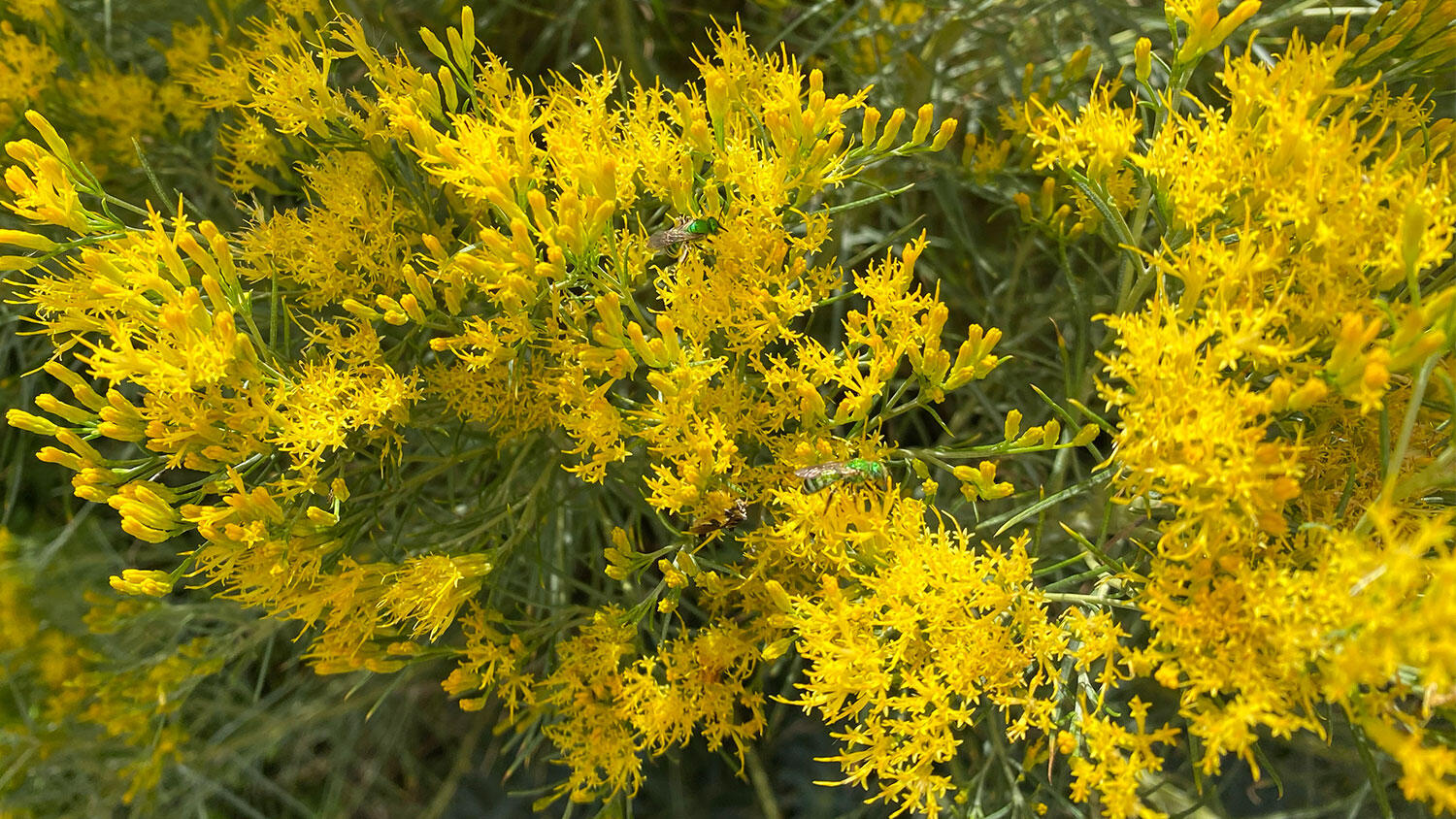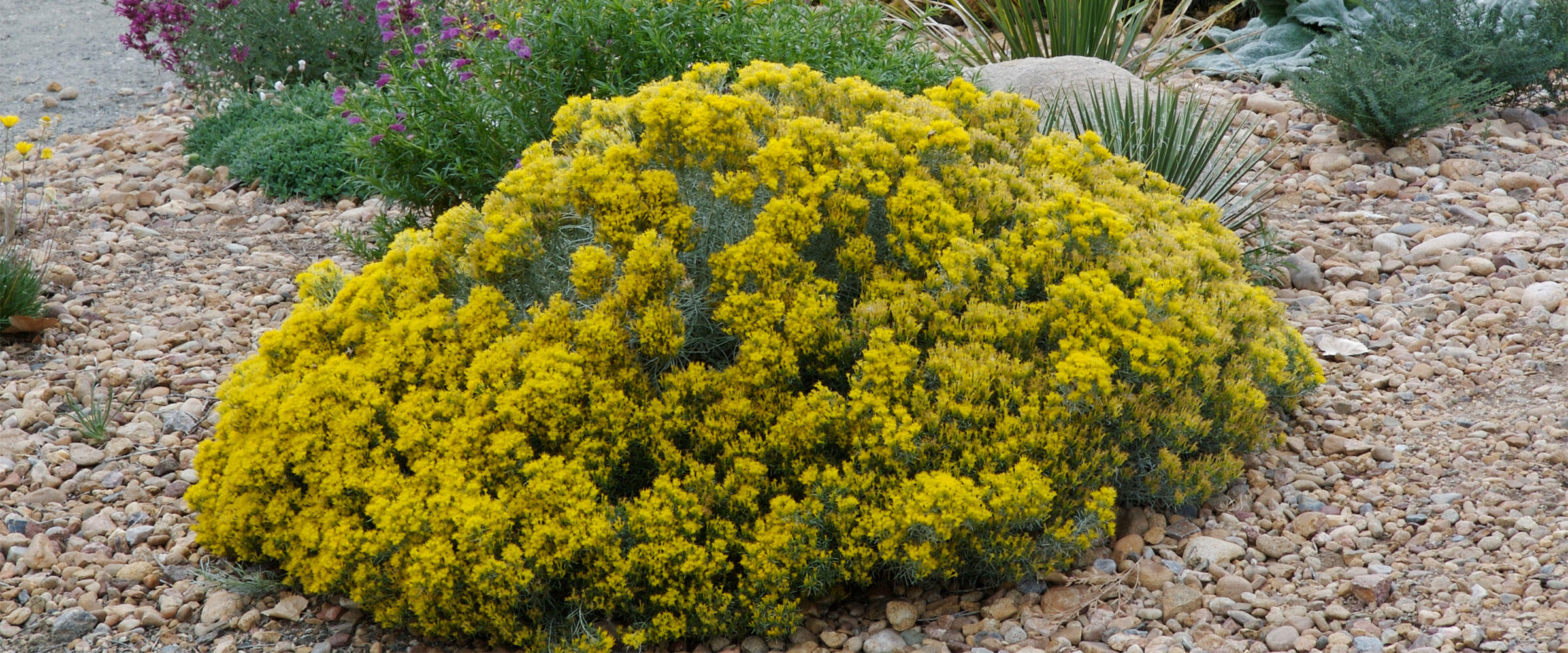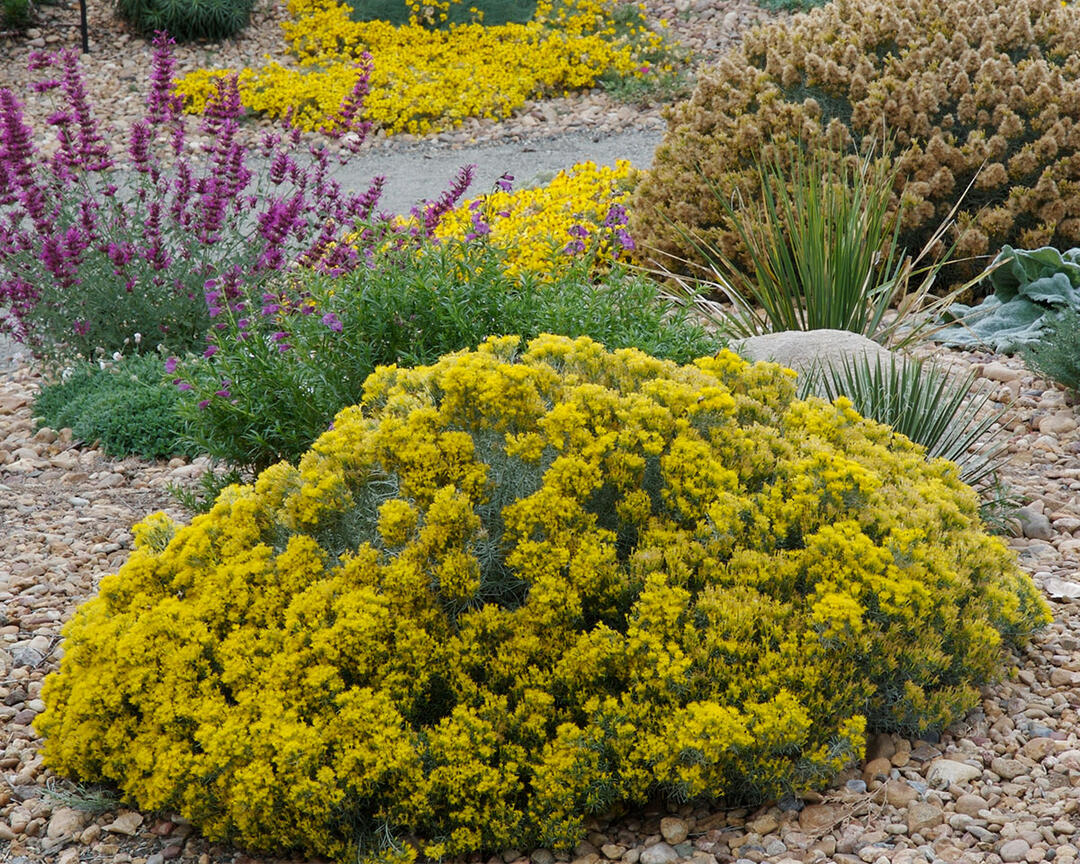Our monthly Plant Profiles from Plant Select® feature plants that thrive in the Rocky Mountain region and provide critical habitat for birds and other wildlife.
Rabbitbrush for Late Summer and Fall Flowers
In August all across the North American West, bright yellow buds on native rabbitbrush signal the summer’s end and the beginning of our beautiful autumns. This late-blooming dryland shrub is found in the steppe regions throughout the Western United States and northern Mexico, thriving with very little water in soils with little organic matter. (Steppe regions are found around the globe and are characterized by grassland or shrubland without trees, apart from those near rivers and lakes.)
In the wild, rabbitbrush vary from large, green or blue-grey-stemmed shrubs to very small mounded shrubs. The most commonly found variety is an intermediate form with greyish-green stems and leaves, that grows up to four feet tall and equally as wide.
During harsh winters, browsing by deer, pronghorn, and other animals keep rabbitbrush shrubs tidy and full in their native habitats. In home and commercial landscapes, these same plants can become quite gangly and woody. Shearing or “renewal pruning" (taking some or all of the oldest stems/trunks out all the way at the base) will help “simulate” rangeland browsing and keep plants in check.
Baby Blue Rabbitbrush
Another option for home and commercial landscapes is to use the naturally dwarf form Ericameria nauseosa var. nauseosa*, or Baby Blue rabbitbrush. Found in isolated colonies dotting the Colorado Front Range, seed is carefully collected from these colonies and grown at selected nurseries in the West.
Little known prior to the 2011 Plant Select® promotions, this beautiful, naturally-mounding form has silvery-blue stems and foliage all summer long, then bursts into golden color in early-mid August. It requires little care, and keeps its tidy form best in low-water situations (little to no additional irrigation once established) with well-drained soils. These plants are extremely hardy, tolerating temperatures as low as -30 degrees Fahrenheit (USDA Hardiness Zone 4-9).
Pollinator Plants

Not only are rabbitbrush beautiful (and sweetly fragrant, as well!), they also serve important functions for pollinators, especially bees and butterflies. According to the Xerces Society for Invertebrate Conservation, rabbitbrush are especially valuable because they attract large numbers of native bees.
Lastly, the flowers of rabbitbrush are used by the Navajo and other traditional weavers and dyers as a source for yellow dye.
Baby Blue Rabbitbrush At a Glance
- Baby Blue Rabbitbrush
- Ericameria nauseosa var. nauseosa (previously Chrysothamnus nasueosus var. nauseosus.*)
- Height: 16 -28”
- Width: 20-30”
- Hardiness: USDA zones 4-9
- Culture: Full to part sun in low water conditions and well-drained soils
- Look for Baby Blue at your local nursery or garden center. (Ask for Plant Select® plants.)
- "Yellow Twig," a larger form of rabbitbrush with beautiful winter color selected by plantsman David Salman is available through High Country Gardens.
Join Audubon Rockies, Plant Select®, and High Country Gardens in promoting bird-friendly gardening. Become a Habitat Hero!





